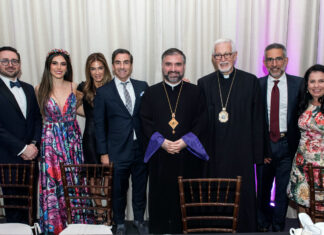Titled “Deciphering Denial: Modernity, the Turkish State and the 1915 Collective Violence against the Armenians, 1789-2009,” the event drew an audience of about 40, including students, faculty and members of the Turkish and Armenian communities.
Following a brief introduction by Cemal Kafadar, professor of Turkish Studies, Goçek used a PowerPoint slideshow and a historical chart to illustrate her investigation of collective violence against Armenians in Turkey. “The violence against Armenians was the first instance of collective violence in Turkish history,” Goçek said. “I’m a sociologist and when I began to explore this topic, I realized I had entered a political minefield. The nationalists on either side, Turks and Armenians, said I couldn’t be a Turk.”
She continued, “I wanted to explore the contested memoirs of 1915. On the one hand, we have the Armenian Diaspora, which argues that this was the first genocide of the 20th century and that it killed between 800,000 and a million-and-a-half people. The Turkish state, on the other hand, denies that the events were a genocide, calling them reciprocal massacres and claims there was nothing intentional in them. Turkey sets the number of deaths at 400,000, both military and civilians.”
She added, “Most scholars agree that the events were a genocide. Then the question is, why do the Turkish state and society still deny it? This is not just a significant issue for a sociologist; it is a significant issue in Turkey today.”
To explore the historical roots of collective violence, Goçek said it is necessary to study social pressures. “Even if there is tension in a society, it doesn’t necessarily translate to violence.”
Studying government documents, interviews with survivors or descendants of survivors and Turkish memoirs can provide evidence of certain patterns. “If you look at Ottoman history,” said Goçek, “you can see that violence was always there, even as far back as 1789, the time of the French Revolution. There were the massacres under Abdul Hamid in 1894 to 1896, and the pattern of violence continued in the Turkish Republic with forced military recruitment in 1941-42 and the forcible removal of the Greek population in 1964.”









